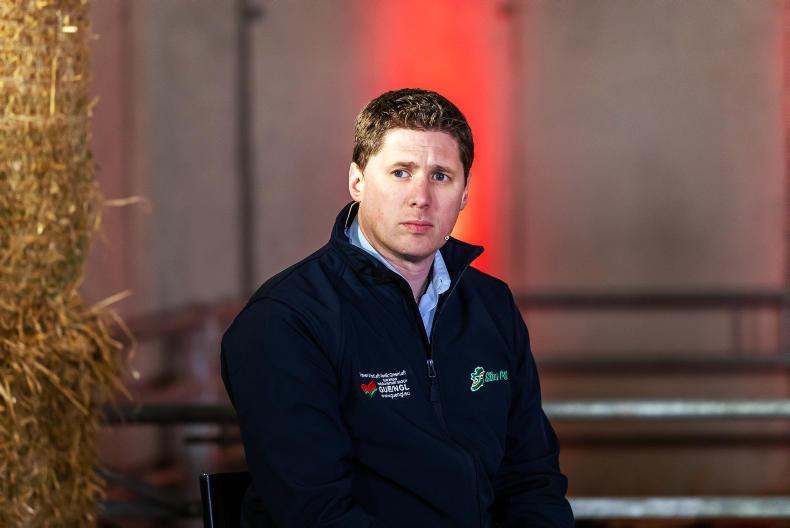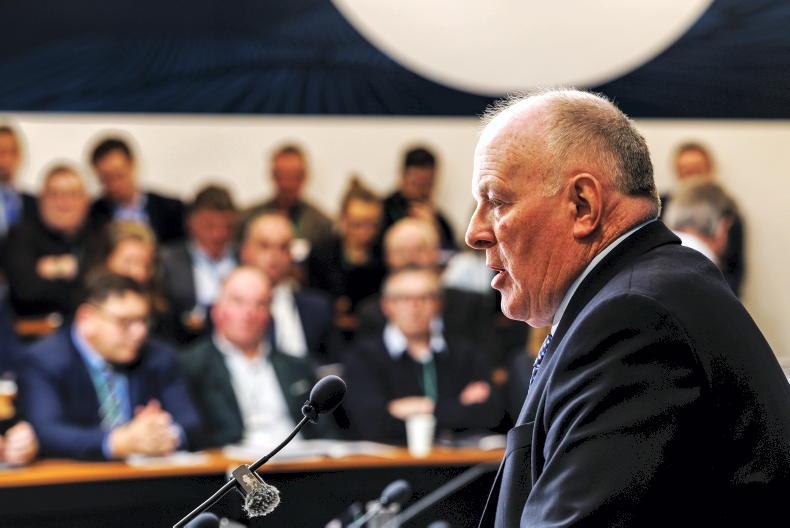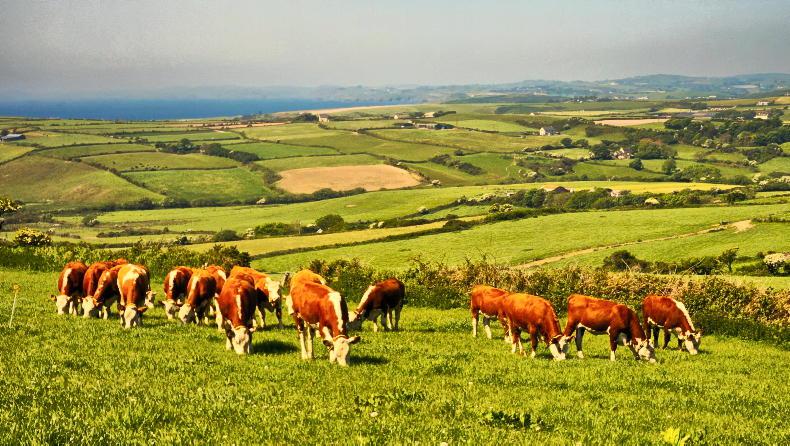The last time the Green Party took part in Government was during the period from 2007 to 2011. One of the party’s conditions of coalescing with Fianna Fáil at the time was the delivery of a 10,000ha annual afforestation programme under the guidance of Trevor Sargent, Minister of State up until 2010.
The average annual planting programme during the Green’s time in Government was approximately 7,000ha, including 2,700ha of broadleaves. This was no mean feat considering the savage cuts in public expenditure in the wake of the economic crash. The performance is all the more impressive as this year’s programme will struggle to reach 3,000ha.
Scotland is a country that Ireland benchmarks its forestry programme with for a number of obvious reasons.
Both countries have similar areas and a terrain that not only supports the same tree species, but has the potential to significantly increase forest cover without negatively impacting on agriculture. During the Green Party’s term in charge of forestry in Ireland, Scotland’s annual afforestation programme had fallen to 4,000ha.
Mackinnon review
Unlike Ireland, the Scottish government, realising the parlous nature of its forestry programme, decided to act. Jim Mackinnon was commissioned to analyse “current arrangements for the consideration and approval of forestry planting proposals” in 2016.
Three years later Scotland’s afforestation had increased to 11,200ha with plans to increase planting to 15,000ha within four years while Ireland heads in the opposite direction (Figure 1).
Last July, the Irish Farmers Journal proposed a similar review for Ireland. To his credit, Minister of State Andrew Doyle commissioned Jim Mackinnon to conduct a review in response to calls from None so Hardy Nurseries and other stakeholders. The report was delivered last November.
While the Scottish report was driven by cabinet secretary Fergus Ewing and immediately implemented, Minister Creed ignored Mackinnon’s review for Ireland. None of the major recommendations have been implemented in the seven months since the review was published. An isolated Minister of State, Andrew Doyle, tried to keep it alive and he deserves credit that Mackinnon has re-emerged in the programme for government.
The programme states that it “fully supports the [forestry] sector and will … implement the Mackinnon report”. It references the appeals process which was one of the main barriers to afforestation outlined by Mackinnon.
The programme says it will “review the forestry appeals process to ensure it is aligned with other comparable appeals processes and ensure the licensing system is sufficiently resourced to clear the existing backlog, ensuring prompt issuing of licences in the future”.
Because of the major barriers in achieving a viable forestry programme, identified by Mackinnon, most farmers no longer consider forestry. As pointed out in a recent Irish Farmers Journal editorial, what other land use has to accept delays of over two years between costly and time-consuming licence applications for establishing a crop and then begin the process all over again when harvesting and roading.
Simplifying this process and addressing the widespread abuse of the appeals system could be addressed in the programme for government proposal to establish a new Planning and Environmental Law Court.
Afforestation
Although the annual afforestation programme proposed by the outgoing government is 8,000ha, the programme for government does not provide planting targets except that it will: “Publish a successor forestry programme to deliver an ambitious afforestation plan reviewing grant and premium rates across all categories in this area, with a particular focus on an increased farmer rate of support.”
Although not directly stated, the IFA has interpreted this as a return to a tiered premium system that favours farm forestry.
While the previous farmer and non-farmer scheme differential was largely unworkable, there is merit in a scheme that favours local farm-forest owners. Likewise, a scheme that benefits part-time farmers and forest owners or their sons and daughters is welcome. This could apply to people who live and work in towns and cities but return to the family forest at weekends as is the case in Scandinavia.
In addition to the above, the following proposals have merit, should the programme be ratified:
Incorporate afforestation into the new CAP to provide incentives for farmers to plant woodlands on their farms, acting as a carbon store, helping to promote wildlife corridors and providing a fuel source for the household. Actively promote and support farm forestry and rewilding options that do not affect agricultural production including small-scale forestry. Promote planting of “protection forests” along rivers and lakes to protect water quality and assist in managing flood risks. Task climate action regional offices to work with public bodies to review land available for planting providing feedback on the potential in this area by the end of 2020. State planting, involving an afforestation programme on Coillte and Bord na Móna lands.Institute a state-sponsored national Tree Planting Day. Promote continuous cover forestry systems .Encourage the private sector to meet sustainability objectives in schemes such as the Woodland Environmental Fund. Provide increased support for the development of agroforestry on Irish farmlands. Programme
for government receives broad welcome
The IFA, Forest Industries Ireland (FII) and the Irish Timber Growers Association (ITGA) have welcomed the programme for government. The re-emergence of the Mackinnon review has been positively received. Although ratification of the programme is uncertain at the time of writing, all stakeholders contacted believed the implementation of Mackinnon would be a major boost to the forestry and forest products sector.
“We welcome the commitment to implement the MacKinnon Report and review the forestry appeals process which is urgently needed to streamline existing bureaucracy and inefficient practices,” said FII director Mark McAuley.
This view is shared by Geraldine O’Sullivan, executive secretary of the IFA farm forestry group. “The implementation of the Mackinnon report is paramount to delivering the ambitious afforestation programme, and addressing the spiralling costs and bureaucracy associated with planting and managing small farm forests,” she said. “If the Government is serious about the Climate Action Plan then we need a more farmer-friendly system.”
Vincent Nally, IFA farm forestry chair, maintained that the need to re-introduce a farmer premium differential, is encouraging. “The recent opposition to forestry has stemmed from people outside of communities buying up land,” he said.
“If we are to create a forestry culture in Ireland, forestry needs to be embedded in local communities, where farmers can manage their forests as they would any other enterprise.
“There is a willingness among farmers to plant more trees, but the Government must ensure that the conditions and requirements are not too onerous as this would detract from the overall objective. It may be time to give serious consideration to relaxing some of the regulation around forestry, particularly, the replanting obligation.”
Donal Whelan, technical director of the ITGA, said he was encouraged by the prominence given to forestry in the PFG and the strong focus on incorporating afforestation into the new CAP. “The programme’s support in developing on-farm forestry initiatives will allow further integration of forestry and farming which will strengthen the sector and ensure a more diverse income stream for farm families,” he said.
The last time the Green Party took part in Government was during the period from 2007 to 2011. One of the party’s conditions of coalescing with Fianna Fáil at the time was the delivery of a 10,000ha annual afforestation programme under the guidance of Trevor Sargent, Minister of State up until 2010.
The average annual planting programme during the Green’s time in Government was approximately 7,000ha, including 2,700ha of broadleaves. This was no mean feat considering the savage cuts in public expenditure in the wake of the economic crash. The performance is all the more impressive as this year’s programme will struggle to reach 3,000ha.
Scotland is a country that Ireland benchmarks its forestry programme with for a number of obvious reasons.
Both countries have similar areas and a terrain that not only supports the same tree species, but has the potential to significantly increase forest cover without negatively impacting on agriculture. During the Green Party’s term in charge of forestry in Ireland, Scotland’s annual afforestation programme had fallen to 4,000ha.
Mackinnon review
Unlike Ireland, the Scottish government, realising the parlous nature of its forestry programme, decided to act. Jim Mackinnon was commissioned to analyse “current arrangements for the consideration and approval of forestry planting proposals” in 2016.
Three years later Scotland’s afforestation had increased to 11,200ha with plans to increase planting to 15,000ha within four years while Ireland heads in the opposite direction (Figure 1).
Last July, the Irish Farmers Journal proposed a similar review for Ireland. To his credit, Minister of State Andrew Doyle commissioned Jim Mackinnon to conduct a review in response to calls from None so Hardy Nurseries and other stakeholders. The report was delivered last November.
While the Scottish report was driven by cabinet secretary Fergus Ewing and immediately implemented, Minister Creed ignored Mackinnon’s review for Ireland. None of the major recommendations have been implemented in the seven months since the review was published. An isolated Minister of State, Andrew Doyle, tried to keep it alive and he deserves credit that Mackinnon has re-emerged in the programme for government.
The programme states that it “fully supports the [forestry] sector and will … implement the Mackinnon report”. It references the appeals process which was one of the main barriers to afforestation outlined by Mackinnon.
The programme says it will “review the forestry appeals process to ensure it is aligned with other comparable appeals processes and ensure the licensing system is sufficiently resourced to clear the existing backlog, ensuring prompt issuing of licences in the future”.
Because of the major barriers in achieving a viable forestry programme, identified by Mackinnon, most farmers no longer consider forestry. As pointed out in a recent Irish Farmers Journal editorial, what other land use has to accept delays of over two years between costly and time-consuming licence applications for establishing a crop and then begin the process all over again when harvesting and roading.
Simplifying this process and addressing the widespread abuse of the appeals system could be addressed in the programme for government proposal to establish a new Planning and Environmental Law Court.
Afforestation
Although the annual afforestation programme proposed by the outgoing government is 8,000ha, the programme for government does not provide planting targets except that it will: “Publish a successor forestry programme to deliver an ambitious afforestation plan reviewing grant and premium rates across all categories in this area, with a particular focus on an increased farmer rate of support.”
Although not directly stated, the IFA has interpreted this as a return to a tiered premium system that favours farm forestry.
While the previous farmer and non-farmer scheme differential was largely unworkable, there is merit in a scheme that favours local farm-forest owners. Likewise, a scheme that benefits part-time farmers and forest owners or their sons and daughters is welcome. This could apply to people who live and work in towns and cities but return to the family forest at weekends as is the case in Scandinavia.
In addition to the above, the following proposals have merit, should the programme be ratified:
Incorporate afforestation into the new CAP to provide incentives for farmers to plant woodlands on their farms, acting as a carbon store, helping to promote wildlife corridors and providing a fuel source for the household. Actively promote and support farm forestry and rewilding options that do not affect agricultural production including small-scale forestry. Promote planting of “protection forests” along rivers and lakes to protect water quality and assist in managing flood risks. Task climate action regional offices to work with public bodies to review land available for planting providing feedback on the potential in this area by the end of 2020. State planting, involving an afforestation programme on Coillte and Bord na Móna lands.Institute a state-sponsored national Tree Planting Day. Promote continuous cover forestry systems .Encourage the private sector to meet sustainability objectives in schemes such as the Woodland Environmental Fund. Provide increased support for the development of agroforestry on Irish farmlands. Programme
for government receives broad welcome
The IFA, Forest Industries Ireland (FII) and the Irish Timber Growers Association (ITGA) have welcomed the programme for government. The re-emergence of the Mackinnon review has been positively received. Although ratification of the programme is uncertain at the time of writing, all stakeholders contacted believed the implementation of Mackinnon would be a major boost to the forestry and forest products sector.
“We welcome the commitment to implement the MacKinnon Report and review the forestry appeals process which is urgently needed to streamline existing bureaucracy and inefficient practices,” said FII director Mark McAuley.
This view is shared by Geraldine O’Sullivan, executive secretary of the IFA farm forestry group. “The implementation of the Mackinnon report is paramount to delivering the ambitious afforestation programme, and addressing the spiralling costs and bureaucracy associated with planting and managing small farm forests,” she said. “If the Government is serious about the Climate Action Plan then we need a more farmer-friendly system.”
Vincent Nally, IFA farm forestry chair, maintained that the need to re-introduce a farmer premium differential, is encouraging. “The recent opposition to forestry has stemmed from people outside of communities buying up land,” he said.
“If we are to create a forestry culture in Ireland, forestry needs to be embedded in local communities, where farmers can manage their forests as they would any other enterprise.
“There is a willingness among farmers to plant more trees, but the Government must ensure that the conditions and requirements are not too onerous as this would detract from the overall objective. It may be time to give serious consideration to relaxing some of the regulation around forestry, particularly, the replanting obligation.”
Donal Whelan, technical director of the ITGA, said he was encouraged by the prominence given to forestry in the PFG and the strong focus on incorporating afforestation into the new CAP. “The programme’s support in developing on-farm forestry initiatives will allow further integration of forestry and farming which will strengthen the sector and ensure a more diverse income stream for farm families,” he said.









SHARING OPTIONS